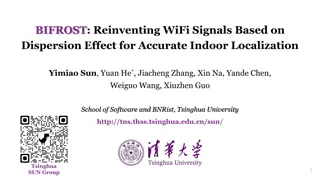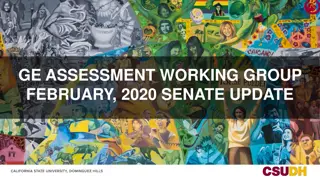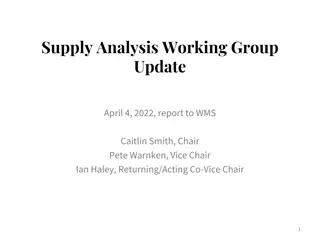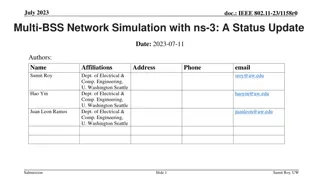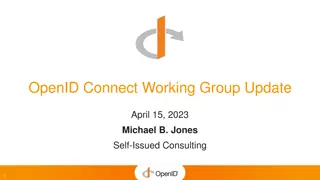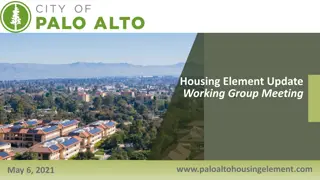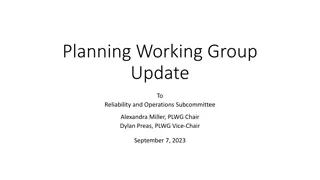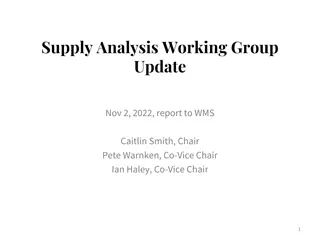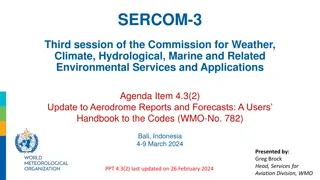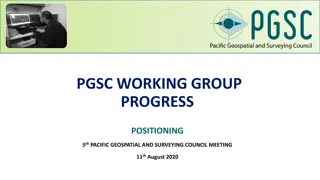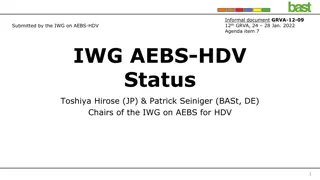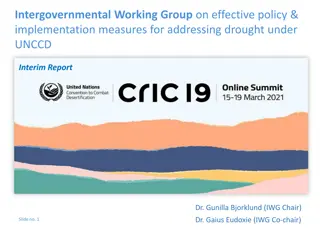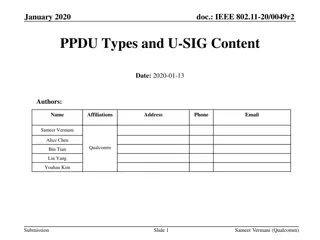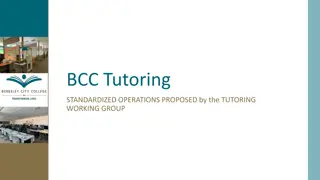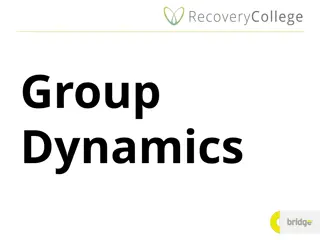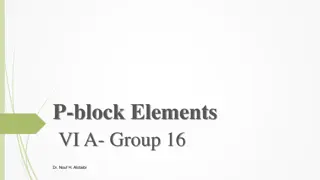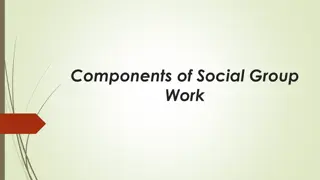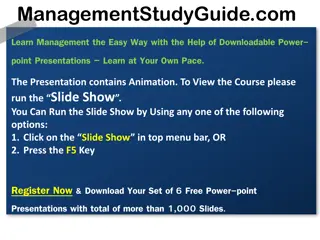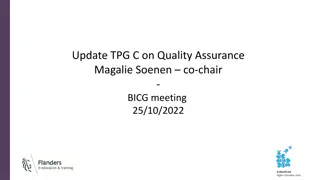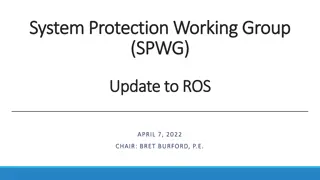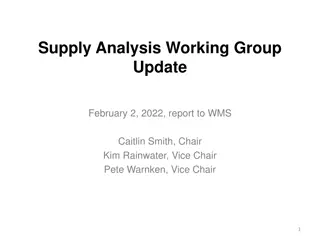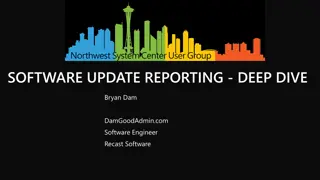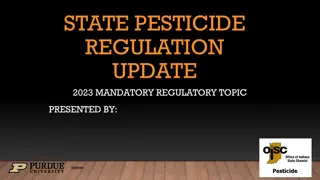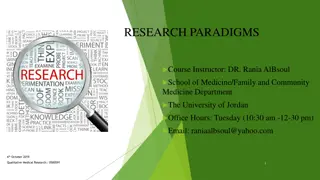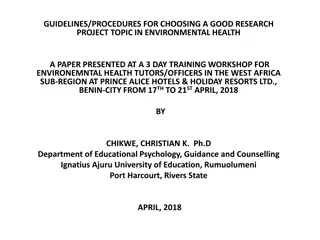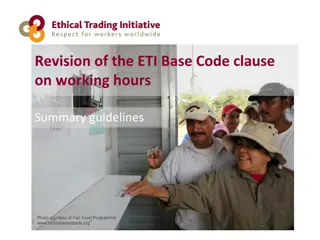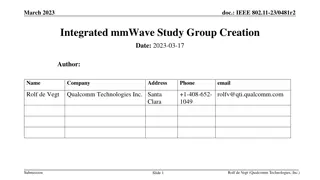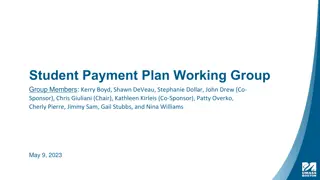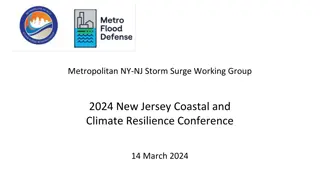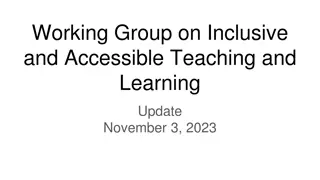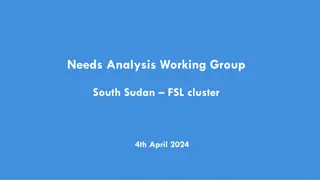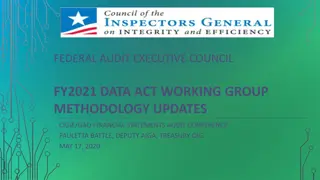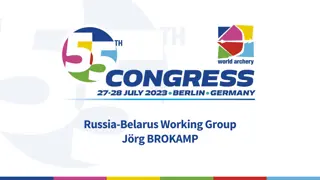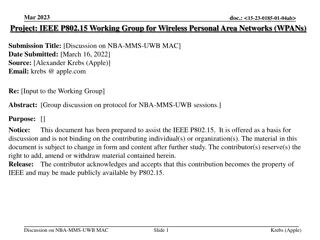Update on NS-3 Working Group for WiFi Research
NS-3 Working Group (NS3W) formed in March 2021 focuses on Wi-Fi research using the ns-3 network simulator. The group aims to address challenges in simulation results' reproducibility and validation, promoting open-source ns-3 code for better community collaboration and bug identification. Membership includes industry giants like Intel, Cisco, and Apple, along with academic institutions such as the University of Napoli and University of Washington.
Download Presentation

Please find below an Image/Link to download the presentation.
The content on the website is provided AS IS for your information and personal use only. It may not be sold, licensed, or shared on other websites without obtaining consent from the author. Download presentation by click this link. If you encounter any issues during the download, it is possible that the publisher has removed the file from their server.
E N D
Presentation Transcript
July 2022 doc.: IEEE 802.11-22/1068r1 NS-3 Working Group on WiFi: An Update on 802.11ax and .11be Models Date: 2022-07-14 Authors: Name Stefano Avallone Affiliations University of Napoli Address Via Claudio 21, 80125 Napoli, Italy Phone email stavallo@unina.it Submission Slide 1 John Doe, Some Company
July 2022 doc.: IEEE 802.11-22/1068r1 Abstract Introducing the NS3W Group, focused on research on Wi-Fi with the aid of the ns-3 network simulator. Submission Slide 2 John Doe, Some Company
July 2022 doc.: IEEE 802.11-22/1068r1 Current usage of simulation results Packet-level simulations are often used to evaluate proposed new 802.11 features The code of the simulator is not publicly available Often, companies maintain their own customized version of ns-3 Results are not easily reproducible Difficult to verify and validate the presented results Submission Slide 3 Stefano Avallone (UNINA)
July 2022 doc.: IEEE 802.11-22/1068r1 Open source ns-3 Code is publicly available Existing code can be inspected by everyone New code is publicly reviewed No duplicate efforts to implement new features Community helps testing and finding bugs About five 802.11ax bugs were fixed in last months after user reports But ns-3 was running much behind the IEEE standard Support for a new amendment came months/years after the publication of the standard Submission Slide 4 Stefano Avallone (UNINA)
July 2022 doc.: IEEE 802.11-22/1068r1 The NS3W Group In March 2021, the NS3W group was formed to conduct research on Wi-Fi by leveraging the ns-3 network simulator Membership from industry and academia Founding members/new members Intel Cisco Apple MaxLinear Univ. of Washington Univ. of Napoli UPF Barcelona Univ. of Delaware Georgia Tech Submission Slide 5 Stefano Avallone (UNINA)
July 2022 doc.: IEEE 802.11-22/1068r1 The NS3W Group Companies provide Funding Directions for current/future research Insights on specs interpretation & implementation choices Code review (optional) Universities Propose projects Periodically (bi-weekly) share updates on project progress Submission Slide 6 Stefano Avallone (UNINA)
July 2022 doc.: IEEE 802.11-22/1068r1 NS3W Group: achievements Developed code eventually is merged into the open source ns-3 (at the discretion of the Group) Many 802.11ax features were merged shortly after the publication of 802.11ax-2021 DL OFDMA (three ack sequences) UL OFDMA (Basic TF, BSRP TF, Multi-STA Block Ack) Spatial Reuse (OBSS-PD) Submission Slide 7 Stefano Avallone (UNINA)
July 2022 doc.: IEEE 802.11-22/1068r1 NS3W Group: achievements Many other features are in development/being merged into the open source ns-3 Per-20 MHz channel sensing and dynamic bandwidth operation Dual NAV MU-MIMO (both DL and UL), including CSI feedback protocol PowerSave mode TWT (both Individual TWT agreements and broadcast TWT schedules) Submission Slide 8 Stefano Avallone (UNINA)
July 2022 doc.: IEEE 802.11-22/1068r1 NS3W Group: achievements Work is already ongoing to support new 11be features Node architecture has been redesigned to support Multi-Link Operation First two merge requests already merged Multi-Link discovery Multi-Link setup EHT PPDU formats Submission Slide 9 Stefano Avallone (UNINA)
July 2022 doc.: IEEE 802.11-22/1068r1 NS3W Group: achievements Code and project updates are shared within the group Companies are not prevented from developing their own logic for internal use Multi-User Scheduler to select among SU, DL MU and UL MU transmissions Association Manager to select the links a non-AP MLD requests to setup TWT AP Manager and TWT STA Manager to define the behavior of TWT requesting/responding STA and TWT scheduling AP/scheduled STA Submission Slide 10 Stefano Avallone (UNINA)
July 2022 doc.: IEEE 802.11-22/1068r1 NS3W Group: achievements Projects not necessarily have to implement standard features 2021 project on multi-AP coordination (C-TDMA and C-OFDMA) Universities can use the developed features to carry out research works Following slides illustrate sample simulation results obtained with the enhanced ns-3 simulator Submission Slide 11 Stefano Avallone (UNINA)
July 2022 doc.: IEEE 802.11-22/1068r1 OFDMA impact on latency Single BSS, 40 MHz channel, 40 stations, MCS 11, non-saturated conditions (100 Mbps [left] or 125 Mbps [right]) NO OFDMA 2xRU-242 4xRU-106 8xRU-52 18xRU-26 NO OFDMA 2xRU-242 4xRU-106 8xRU-52 18xRU-26 1 1 0.8 0.8 0.6 0.6 ECDF ECDF 0.4 0.4 0.2 0.2 0 0 0 1 2 3 4 5 6 7 8 9 10 0 2 4 6 8 10 12 Latency (ms) Latency (ms) S. Avallone, P. Imputato, G. Redieteab, C. Ghosh and S. Roy, "Will OFDMA Improve the Performance of 802.11 Wifi Networks?," in IEEE Wireless Communications, vol. 28, no. 3, pp. 100-107, June 2021, doi: 10.1109/MWC.001.2000332. Submission Slide 12 Stefano Avallone (UNINA)
July 2022 doc.: IEEE 802.11-22/1068r1 OFDMA impact on throughput Single BSS, 40 MHz channel, MCS 11, saturated conditions (data rate = PHY rate), DL only [left] or DL+UL with MU EDCA Param Set [right] NO OFDMA 2xRU-242 4xRU-106 8xRU-52 NO OFDMA 2xRU-242 4xRU-106 8xRU-52 8xRU-52 + 2xRU-26 8xRU-52 + 2xRU-26 18xRU-26 18xRU-26 4xRU-106 + 2xRU-26 4xRU-106 + 2xRU-26 240 240 Throughput (Mbps) Throughput (Mbps) 220 220 200 200 180 180 160 160 18 24 30 36 18 24 30 36 Number of stations Number of stations S. Avallone, P. Imputato, G. Redieteab, C. Ghosh and S. Roy, "Will OFDMA Improve the Performance of 802.11 Wifi Networks?," in IEEE Wireless Communications, vol. 28, no. 3, pp. 100-107, June 2021, doi: 10.1109/MWC.001.2000332. Submission Slide 13 Stefano Avallone (UNINA)
July 2022 doc.: IEEE 802.11-22/1068r1 MU EDCA Timer impact on throughput Single BSS, equal number of HE stations and legacy stations D. Magrin, S. Avallone, S. Roy, and M. Zorzi, "Performance Evaluation of 802.11ax OFDMA through Theoretical Analysis and Simulations," in IEEE Transactions on Wireless Communications, under revision. Submission Slide 14 Stefano Avallone (UNINA)
July 2022 doc.: IEEE 802.11-22/1068r1 Questions? Submission Slide 15 Stefano Avallone (UNINA)



